#alan meyerson
Explore tagged Tumblr posts
Text
The Music of Jedi: Survivor
Last night I went to the Grammy Museum for an event celebrating the Jedi: Survivor score! Sometimes living in Los Angeles has its benefits. It was an evening with composers Stephen Barton and Gordy Haab, as well as their recording engineer Alan Meyerson, moderated by Jon Burlingame. I took copious notes throughout so I could share them with you all :) All quotes are paraphrases, I’m not that quick a note taker.


My husband and I settled into our seats, me vibrating with excitement as the lights dimmd. I was already hyped to hear the composers talk about my favorite game and their process for scoring it, but then my jaw fell out of my head because who strolled up on stage but fucking Cal Kestis himself, Cameron Monaghan, unexpected and uncredited on the event description.


I almost rolled out of my chair. Then I frantically started smacking my husband (who’s never played the game, but loves music and production) and hissing “it’s him it’s him it’s the Jedi!!!”
Cameron’s intro was brief but lovely. He introduced himself, then paused and said something like, “Do you hear that? That’s the sound of silence. That is awful. I can hear my own thoughts! No one wants to play a game like that. Which is why we have these guys!” He introduced the composers, Stephen and Gordy, as well as the sound engineer Alan and the moderator for the event, shook their hands and exchanged some hugs, then sat down in the audience. Giddily I returned to my notes as Jon led the discussion.
Q: How did you get into scoring video games?
Stephen was a gamer and had always been interested in working with video games. They were “enticing” and the schedule was much more appealing than for TV, where you might be handed a script and told to get the music back in a few days.
Gordy hadn’t worked particularly in games before.
Alan has been mixing and engineering video game soundtracks for the past 25 years, like Gears of War.
Q: What’s the difference between scoring a film and scoring a video game?
For film, it’s adding music onto what already exists; often the composer isn’t involved until the last 6 weeks or so of production. (Fun fact I learned earlier this year, Ludwig Goransson was involved from the start on Oppenheimer because Christopher Nolan specifically wanted to subvert that.)
The film is fairly static by the time the composers get their hands on it, so things are unlikely to change.
Video games are more like trying to put clothes on someone running a race, because drastic changes can happen at any time. The timeline is also greatly extended — 2-3 years is common — so things may evolve and shift drastically in that time.
Film is also much less volume of music… they wrote an entire 8 hours!
Q: Is there a Star Wars music “house” style?
Initially Star Wars projects outside of the original trilogy were often scored as if they were B sides to the original soundtrack. But the aesthetic is evolving. There are a few standards though — there must always be that symphonic scale.
The score was performed at Abbey Road. Alan mentioned that he was actually there on 9/11 working on a movie about a terrorist attack. Stephen loves recording at Abbey Road so much he and his wife named his daughter Abbey. All three of them agreed that Abbey Road is magical and the orchestra practically blends itself; for choral performances, all you have to do is stick a couple microphones in there and they sound fantastic.
They played a clip of “Dark Times,” with gameplay footage intercut with the symphony performing at Abbey Road. They explained that they wanted to develop a new theme for the Empire. At this time, the Empire just is. You can’t use the Imperial March, because the Imperial March is how the Empire perceives itself. But how does Cal see the Empire? It’s dark and ominous. It’s everywhere. It’s a fact of life.
Gordy explained that they literally shaped the melody like the sinus rhythm of a heartbeat to indicate that Cal’s on the run, his heart always pounding, never safe. They used a full 12 tone chromatic scale to keep the track always uncomfortable and unsettled.
Stephen is such a Merrical shipper! He talked about how one of the central conflicts of Survivor is Cal struggling with his feelings towards Merrin, and what do you do when you’ve utterly lost the fight? He pointed out what the Senator tells Cal, and calls him a pretty reasonable guy. Do you stop fighting when you’ve clearly lost? “Maybe Cal should go shack up with Merrin somewhere and have a nice life.”
Q: What is it like having so much funding for the score on a game like this?
All you can really sell now is quality, and people expect it now.
Q: What is the process like?
They are brought into the game in the script phase, where they may see some concept art and get to read the script to help determine the story beats.
The collaboration is joyful! It seems like it could be really scary, to have game play testers, the game designers, and other music folks all weighing in on how the score is working or not working, but they actually really enjoyed it. They’ll usually do about half the music, then have people test play it for a few months, come back with notes, and then work on the remainder after seeing what worked and what didn’t.
They played “Flight” in its entirety with gameplay of Cal and Merrin outrunning the Trident, and talked extensively about our girl Merrin! Stephen talked about how in JFO, Merrin was important but not as big of a player. Now in Jedi: Survivor, Merrin is vital,and we can see her story arc take shape. Her small motif in JFO was expanded into an epic, heroic scale after we see her power with portals and moving on the wind. They reached for all kinds of wind instruments, from Alpine horns, Tibetan horns, and even the “most tasteful vuvuzela ever.”
Note: it’s almost as heart-pounding to watch that sequence on the big screen as it is to play it!
They both said that some music flows onto the page and is easy to write; the escape from Jedha sequence was not one of those! It wasn’t easy to write, mix or play! A hundred people worked on this song, and it was hard as hell. The orchestra musicians kept coming up to Alan and telling him they loved playing it because it was such a challenge.
They don’t always tell the studio who wrote what. They work well together as they both love bourbon and coffee! Stephen says he’s great at about ¾ of the tune but not the ending, whereas Gordy can fix that up in a jiffy. They also sometimes divvied things up by planet or emotional beats.
Q: I noticed in this last song (“Flight”) there was a choral element. How do you decide when to incorporate choir instead of synth choir?
Choir is often the first casualty of budget cuts since it’s so many people involved. Sometimes, synth choir is chosen for just a vibe or an extra layer.
However, there’s a rule that in musicals when the emotion is building to a point that words can no longer contain them, that’s when a character must burst into song. For a score, when the emotion is swelling and can no longer be contained by mere instruments, that is when to pull out the choir. So we see it in “Flight.”
Me: We also see it in “Rage,” muahahaha.
They used 120 singers for Flight and only needed 3 microphones because of how good Abbey Road sounds.
They prefer amateur choirs to session professionals since you can sometimes have too-professional singers trying to out-sing each other, and amateurs are usually more relaxed.
Q: There were a number of unusual or even invented instruments used for this score, tell us about them.
Gordy made bottle chimes. He accidentally dropped a bottle of water while playing tennis and a ball pinged off it, making a lovely sound. He ordered 20 metal water bottles and strung them in a wardrobe rack with different amounts of water in them. Because it took ages to make, they used it in loads of places in the score.
Stephen went nuts and ordered 200 containers of BlueTack for the pianos for Koboh. They wanted Koboh to sound like the old West, but not that spaghetti Western honkytonk piano sound. If you make BlueTack into a sausage shape and roll it around a piano string you can make it make these strange broken sounds sort of like a gamelan. This is called a prepared piano. The low bumbumbum noises when first getting on Koboh and meeting the pit droid? Freaking piano. I would have never guessed! They did this to 3 pianos.
They played a clip of Where the Nekkos Roam. They used the prepared pianos, an orchestra, dulcimers, Basset horns, euphoniums, tubas. They wanted Koboh to feel lived in and to have history expressed in the music. The musicians were excited to have to rent out Basset horns since like nobody actually owns one.
Q: Tell us about the cantina music.
The original cantina brief from George Lucas to John Williams was apparently, “what if aliens came down in 1000 years and found sheet music from Benny Goodman, but didn’t have the same instruments?” And thus we got the Mos Eisley cantina theme which is almost unbeatable.
They were thinking of scoring the cantina music themselves, but then thought, “what if we gave that brief to a bunch of really cool bands?”
They highly recommended Dan Mayo from Tantran. They recommended taking a few hours to watch him kick ass on the drums on YouTube.
Tantran recorded "Fields of Dusk" for the cantina first, then Stig came back and said “what if we wove this into the score? What if it was Cal and Merrin’s love theme?” Then they created a symphonic version, also partially inspired by a Joni Mitchell song.
They played part of the cantina version of “Fields of Dusk,” then they played the symphonic version with Cal and Merrin riding the spamel to Cere’s base. They gushed about being able to work with the story and the subtext.
Alan said that "Fields of Dusk” “is visceral. It vibrates shit inside of you. Mixing it was a highly emotional experience for me. Even now sitting under the subwoofer — it’s right here, over my head — it’s very emotional.”
Q: How many motifs do you have?
“Seven thousand.” - Stephen
Gordy later amended that to about two dozen, but with tons of variations.
Q: What are the interactions like with the game developers?
They get to be in the building with them, working on the narrative team — making sure to serve the story first. It also lets them practice gameplay or watch others playing to see how it flows.
Again, it’s a 2-3 year process.
They played the clip of Cal and Merrin making a campfire in the cave on Jedha. Stephen is all about the Merrical ship (not that he used those words, alas, but still)! He said this was such gorgeous writing, really allowing the technology to showcase the acting, and it’s his all time favorite scene in the game.
The whole theater clapped as he said that. Yes! A whole theater clapping while someone was talking about Merrical and calling it gorgeous. *sobbing forever*
Q: What has it been like to meet fans?
They’ve been delighted by the fans and how much they love the characters and the amazing performances of all the actors in the game.
Q: Are there plans for a sequel?
Stephen: “Are there Lucasfilm snipers out there? Look for the red dot…”
Gordy: “There’s not NOT plans.”
Fan questions!
Alan mentioned he loves doing the hardest piece first! Then it’s all skiing downhill.
A fan asked about more weird created instruments.
They also used a bunch of bamboo smacking other pieces of bamboo, as well as using little drums from other purposes or sets.
Was there anything they messed up or wanted to do differently than they did in JFO?
They accidentally didn’t loop music in the hangar on Zeffo, so if you stick around there for more than 3 minutes, it just becomes wind sound and gets very lonely. A live streamer was playing the game, talked to his audience for like 10 minutes, then wandered around almost in silence as his fans commented “why is this game so quiet?”
Gordy wanted to make JFO sound much darker and got his wish in Survivor.
I had so been hoping they would talk about “Rage” and the struggle with the dark side, but they were sort of avoiding spoilers. So when they got to the Q&A I had to speak up.
I asked, “What was it like working with darker themes later in the game, like with Rage? You see a real shift in the motifs and there’s also more amazing choral work.” Their faces seriously lit up XD
Stephen said this was one he handed to Gordy because it was very difficult.
Gordy said that this is Cal at his worst, so it had to be so over the top. Think of consonant sounds crashing through the melody, Cal trying to keep control of his thoughts but they’re twisting away, he’s trying to think straight and can’t. It’s discordant. It’s also scored to evoke a heartbeat throughout, like breathing.
It was so hard for the choir to do, going back and forth — you can’t do that with choral samples or synth!
They ended with a video they played from their Hollywood Bowl show in June, and said we were only the second group of people to see it. They played a clip where they do use the classic Imperial March, but contoured so you only get the silhouette of its shape, instead of the full sound. It ended with a clip of the Tantran band playing a wicked awesome set out in the desert. The last image they showed was a list of the 287 people who worked on the score!
We let out and I did get to meet them! Stephen was lovely and I told him it was just such a beautiful, haunting score. I actually had a sketch of the campfire scene with me and he signed it! His daughter Abbey is an artist too and she was really impressed by my sketchbook (she looked to be about 11). Gordy also got to see a bit of my sketchbook and signed Cal in Nova Garon! What an awesome night! We didn’t see Cameron again but I was so astounded to see him the first time I didn’t mind at all.
SO COOL! Sometimes, kids, living in Los Angeles isn’t so bad!!
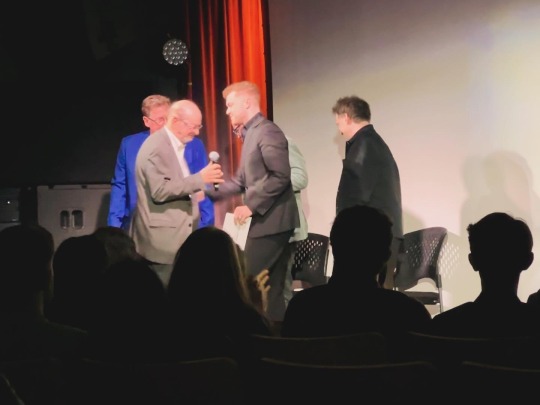



#jedi: survivor#cameron monaghan#cal kestis#gordy haab#stephen barton#alan meyerson#grammy museum#jedi survivor#jedi survivor spoilers#jedi: survivor spoilers#my jedi posts
97 notes
·
View notes
Text
youtube
From Hans Zimmer on YouTube: Dragon Age: The Veilguard Main Theme [From "Dragon Age: The Veilguard (Original Soundtrack)"]
"Dragon Age: The Veilguard Main Theme [From "Dragon Age: The Veilguard (Original Soundtrack)"] · Hans Zimmer · Lorne Balfe Dragon Age: The Veilguard Main Theme (From "Dragon Age: The Veilguard (Original Soundtrack)") ℗ 2024 Electronic Arts Music Released on: 2024-10-01 Producer: Lorne Balfe Producer: Hans Zimmer Producer: Steve Schnur Mixer: Alan Meyerson Mastering Engineer: Patricia Sullivan"
[source, via] | [Spotify link]
The art:

Text in image reads "Dragon Age: The Veilguard Original Soundtrack. Music by Hans Zimmer & Lorne Balfe".
#dragon age: the veilguard#dragon age: dreadwolf#dragon age 4#the dread wolf rises#da4#dragon age#bioware#video games#long post#longpost
373 notes
·
View notes
Text
Which one on pbskidsfilms5.tumblr.com
#my polls#polls#tumblr polls#music#poll time#pbs#pbs kids#film music#conductor#please vote#new music#music blog#tournament poll#musician#my post#shares#interesting#tumblr#voting#choose one#you choose#preparation#people#imdb.com#cinema
0 notes
Link
Wednesday 6th December from 7.30pm - 9.00pm at the Grammy Museum in downtown Los Angeles will bring us this Star Wars Jedi: Survivor panel featuring Grammy-Nominated Composers Gordy Haab and Stephen Barton along with Engineer/Producer/Score Mixer Alan Meyerson, allowing us a look into the creation of this essential Star Wars soundtrack. Tickets are $25.00. The GRAMMY Museum is thrilled to host an evening celebrating the music behind STAR WARS JEDI: SURVIVOR. The event will feature a special panel discussion featuring composers Gordy Haab and Stephen Barton, plus Engineer/Score Mixer/Producer Alan Meyerson. The panel will be moderated by Jon Burlingame. Tickets available now at: https://www.universe.com/events/the-music-behind-star-wars-jedi-survivor-tickets-Z02GJ5 WHERE: The GRAMMY Museum in Downtown Los Angeles 800 W. Olympic Blvd. LA, CA 90015 WHEN: Wednesday, December 6, 2023 TIME: 7:30 PM PST [amazon box="B0C36DC6LH"]
0 notes
Text
Morton H. Meyerson Senfoni Merkezi -Akustik Ferah

1989 yılının Eylül ayında kapılarını açan Ieoh Ming Pei (I. M. Pei) imzalı Morton H. Meyerson Senfoni Merkezi 45 bin m² (484.375 ft²) brüt alan üzerinde 30 metre (100 ft) yüksekliğindedir. Kabaca 2 bölüme ayrılan yapı, 2.200 kişilik devasa bir gösteri salonuna sahiptir. Salonu ise meydan görevi gören, kaba kütlede oluşturulan boşluklar sayesinde ziyaretçileri üzerinde ışık ve perspektif oyunları oynayan açık ve kapalı alanlar çevrelemektedir. Gelin bu tasarım harikası senfoni merkezini hep beraber inceleyelim...

Morton H. Meyerson / Dök Mimarlık
Morton H. Meyerson Senfoni Merkezi Tarihi
Morton H. Meyerson Senfoni Merkezi, modern mimarlık alanında önemli bir yere sahip olan I. M. Pei tarafından tasarlanmış eşsiz bir yapıttır. Bu görkemli merkez, sadece bir konser mekanı olmanın ötesinde, aynı zamanda bir sanat eseri olarak da kabul edilmektedir. Meyerson Senfoni Merkezi'nin tarihi, sadece inşa edildiği döneme değil, aynı zamanda tasarım sürecine de ışık tutmaktadır. Mimar I. M. Pei, Meyerson Senfoni Merkezi'nin tasarımına adım attığında, kariyerinin zirvesinde olmasına rağmen hala yaratıcı enerjisiyle dolu bir şekilde çalışmaktaydı. Pei, daha önce Louvre Müzesi gibi uluslararası alanda dikkat çeken projelere imza atmış bir isimdi ve aynı dönemde farklı önemli projeler üzerinde çalışıyordu. Bu dönemde, Dallas şehrinin idarecileri, şehirlerinin sanatsal ve kültürel potansiyelini yansıtan çağdaş bir simge inşa etmeye karar verdiler. Bu amaçla, Avrupa'nın en ünlü konser salonlarıyla rekabet edebilecek nitelikte bir mekan tasarlamak üzere bir komite oluşturuldu. Komite, dünya genelinden 45 farklı ünlü mimarla iletişime geçti ve projeyi göz önünde bulundurarak yaratıcı fikirlerini bekledi. I. M. Pei, bu seçkin grup içinde yer alsa da başlangıçta cevap vermekten çekindi. Onun bu tereddütünün arkasında, daha önce Dallas'ta tasarladığı belediye binasının projede olumsuz bir izlenim bırakmış olabileceği endişesi yatıyordu. Ancak komiteden bir üye, Pei'yi ikna etmek adına birebir iletişime geçti. Bu etkileşim sonucunda, Pei projeyi değerlendirmeyi kabul etti. Mimari dehası Pei, daha önce bir konser salonu tasarlamış olmasa da, Meyerson Senfoni Merkezi'nin mimari öğelerini şekillendiren bir vizyonla komitenin karşısına çıktı. Komite üyeleri, Pei'nin önerdiği modern ve işlevsel tasarımı, geleneksel konser salonlarının ötesine geçen bir yaklaşımla etkileyici buldular. Bu nedenle, Pei'nin projenin başmimarı olması yönünde oybirliğiyle karar verdiler. Senfoni merkezinin tarihi, böylece I. M. Pei'nin kusursuz vizyonu ve komitenin cesur kararlılığının birleşimiyle yazılmış oldu. Meyerson Senfoni Merkezi, sadece akustik açıdan değil, aynı zamanda mimari açıdan da çığır açan bir yapı olarak bugün hala varlığını sürdürmektedir. Işıkla dans eden cam yüzeyleri, modern hatları ve işlevselliği ile bu yapı, sadece bir konser salonu değil, aynı zamanda insanlığın yaratıcılığının ve sanatsal arzularının bir yansıması olarak da öne çıkmaktadır. "We were convinced that we would get the world's greatest architect putting his best foot forward" "Dünyanın en büyük mimarının elinden gelenin en iyisini yapmasını sağlayacağımıza kanaat getirmiştik." -Komite üyeleri


Morton H. Meyerson Senfoni Merkezi, adını sadece bir isimden değil, aynı zamanda zengin bir hikayeden almaktadır. Bu isim kaynağı ve yapının kullanım hedefi, merkezin ne kadar derin ve anlamlı bir yapı olduğunu göstermektedir. Adını alan Morton Meyerson, eğitim hayatını ekonomi ve felsefe alanlarında şekillendirerek geniş bir vizyonla donanmış bir birey olarak öne çıkmaktadır. Aynı zamanda, Dell'in kurucusu Michael Dell'in öğretmeni ve akıl hocası olarak da bilinir. Bu öğretmen-öğrenci ilişkisi, teknoloji dünyasının dahi isimlerinden birini yetiştirmesinin yanı sıra, Meyerson'un etkileyici bilgi birikimini ve liderlik özelliklerini ortaya koymaktadır. Senfoni Merkezi'nin adını Meyerson'dan almasının özel bir sebebi vardır. Yapının inşa sürecinde ortaya çıkan maddi gereksinimler, bir bağışla karşılanmış ve bu bağışın ardında Morton Meyerson'un ismi yatmaktadır. 1986 yılında, inşa süreci devam ederken, işadamı H. Ross Perot, merkeze 10 Milyon Dolarlık büyük bir yatırım yapmayı teklif etmiştir. Karşılığında ise merkezin isminin Morton Meyerson'a atanmasını istemiştir. Bu anlamlı jest, Meyerson'un sadece bir isim değil, aynı zamanda bir vizyon ve değerler bütünü olduğunu gösterir.
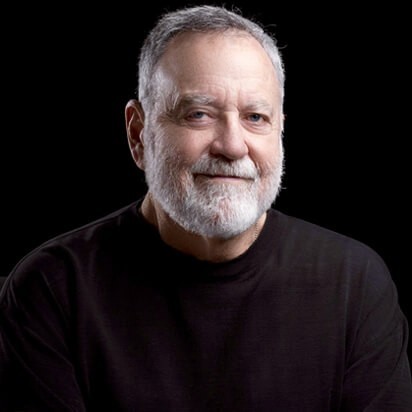


Sol: Morton Meyerson / Dök Mimarlık / Sağ: H. Ross Perot Senfoni Merkezi'nin tamamlanmasıyla birlikte, bu büyülü yapı artık Morton Meyerson'un adını taşımaktaydı ve Dallas Senfoni Orkestrası için kalıcı bir ev olmuştu. Dallas Şehri'nin sahip olduğu bu değerli eser, aynı zamanda Dallas Senfoni Birliği tarafından yönetilmektedir. Bu birliğin etkisiyle merkez, sadece bir konser salonu olmanın ötesine geçerek, şehirdeki kültürel ve sanatsal etkinliklerin merkezi haline gelmiştir. Bu eşsiz yapı, adını aldığı Morton Meyerson'un vizyonunu, bağışçılığını ve sanata olan tutkusunu yansıtmaktadır. Onun adı, sadece bir isim değil, aynı zamanda bir miras ve ilham kaynağıdır.
Morton H. Meyerson Senfoni Merkezi: Estetik ve İşlevin Mükemmel Buluşması
Morton H. Meyerson Senfoni Merkezi'nin mimarisi, bir mühendislik harikası ve sanatsal yaratıcılığın eşsiz bir birleşimini temsil eder. Bu yapı, mimari tasarımına başlandığı andan itibaren ortaya çıkan vizyon ve gereksinimlerin bir ürünü olarak günümüze kadar gelen etkileyici bir mirası temsil etmektedir. 1982 yılında başlayan mimari tasarım süreci, şehrin yöneticilerinin özel istekleriyle şekillenmeye başlamıştır. Başlangıçtan itibaren, merkezin Avrupa'nın en prestijli salonlarına meydan okuyacak bir kalitede olması hedeflenmiştir. Özellikle canlı müziğin duygusal derinliklerini dinleyicilere aktarabilme yeteneğinin merkezin temel odak noktası olduğu görülmektedir. Bu amaca yönelik olarak, akustik tasarım en üst düzeyde önceliklenmiştir. Profesyonel akustik uzmanları ve ses teknikerleri, salonun "Ayakkabı Kutusu Stili" olarak adlandırılan bir tasarıma sahip olmasını önermiştir. Bu tarz, Amsterdam'daki Concertgebouw ve Viyana'daki Musikverein salonlarında da başarılı bir şekilde uygulanmıştır. Bu öneri, merkezin dinleyicilere unutulmaz bir akustik deneyim sunmasının temelini atmıştır. Mimar I. M. Pei, bu önerilen tasarımı kendi benzersiz yaratıcılığıyla birleştirerek merkezi şekillendirmiştir. Bu süreçte, ünlü Alman mimar Johann Balthasar Neumann'ın eserlerinden ve Paris Operası'nın zarif detaylarından ilham alarak tasarımlarını geliştirmiştir. Pei'nin bu tasarım sürecinde yaptığı düzenlemeler, yapının işlevselliği ile estetik güzellik arasında mükemmel bir denge kurmayı hedeflemiştir. Merkezin genel tasarımında, ızgara sokak örgüsüne uyumlu bir yerleşim tercih edilmiştir. Yapının yerleşimi, şehrin dokusuna uygun bir şekilde planlanarak doğru bir denge sağlamıştır. Yönetim, idare ve teknik alanlar kuzeye doğru yerleştirilirken, ana giriş ve açık mekanlar güney ve batı yönlerine konumlandırılmıştır. Bu tasarım yaklaşımı, yapının şehrin siluetine yönlendirilmesini sağlamış ve dış dünyayla iç içe bir etkileşim yaratmıştır.





Morton H. Meyerson Senfoni Merkezi: Mimarlıkta Eşsiz Etkileşimlerin Dansı Morton H. Meyerson Senfoni Merkezi, özgün ve etkileyici tasarımıyla üst üste yerleşmiş geometrik biçimler arasında kusursuz bir etkileşimi yansıtmaktadır. Bu etkileşimler, mimaride hayat bulmuş ve merkezi sadece bir yapının ötesinde bir sanat eserine dönüştürmüştür. Merkezin ana salonunun, arzulanan akustik etkiye sahip olması, tasarımın merkezinde yer alıyor. "Ayakkabı Kutusu Stili" salon planı, dikdörtgen bir alanda uygulanarak, akustik mükemmelliği hedefliyor. Dikdörtgen yapı, taşıyıcı sistemleri içine alarak dengeli bir kompozisyon oluşturuyor. Bu temel tasarımın etrafında, katlar arası açık planlar ve cam elemanlarla zenginleştirilen bir lobi bulunuyor. Hem karşılayıcı hem de toparlayıcı işlevi olan bu lobi, şeffaf tasarımıyla iç ve dış mekanların etkileşimini en üst düzeye çıkarıyor. Dışarıya açılan bu lobi, aynı zamanda açık havada bir restoran ve bahçelerle buluşarak doğayla bütünleşiyor. Merkezin en dikkat çeken bölümlerinden biri olan gösteri salonu, 2200 kişilik kapasitesi, çok katlı yapısı ve katlar arasında ayrılan alanlarıyla benzersiz bir etkileşim sunuyor. Büyük Konser Orgu, gösteri alanının arkasında konumlandırılarak, bu etkileşimleri zenginleştiriyor. Akustik performansı en üst düzeye çıkarmak amacıyla, gösteri alanı ile org arasına 56 mekanik akustik örtü yerleştirilmiştir. Her gösteri için farklı akustik ihtiyaçlarının olması nedeniyle bu perdelerin mekanik olarak kontrol edilebilmesi önemlidir. Bu karmaşık sistem, mükemmel akustik deneyimi sağlayabilmek için tasarlanmıştır. Taşıyıcı elemanlar, katlar arasındaki döşemeler ve kullanılan malzemeler, akustik performansı olumsuz etkilemeyecek şekilde tasarlanmıştır. Yansıtıcı ve sönümleyici elemanlar, salonda bulunan herkesin her türlü enstrümanın tınısını en net şekilde duyabilmesi için özenle yerleştirilmiştir. Mekanın her köşesi, sesin kaybolmadan iletilmesi ve enstrümanların doğal güzelliklerinin korunması amacıyla düşünülmüştür. Morton H. Meyerson Senfoni Merkezi'nin mimarisi, işlevselliğin estetikle, teknolojinin sanatla mükemmel bir dansını yansıtmaktadır. Her bir detay, ziyaretçilere unutulmaz bir akustik deneyimi sunma hedefiyle özenle düşünülmüştür.



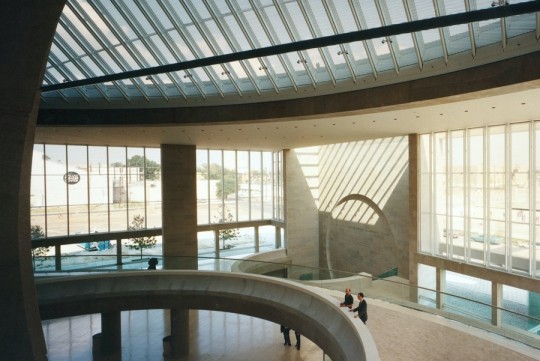




Morton H. Meyerson Senfoni Merkezi İstatistikleri Morton H. Meyerson Senfoni Merkezi içinde toplam: - 24,000 m2 (260,000 ft²) kot üstü alan - 20,900 m2 (225,000 ft²) kot altı alan - 26,860 m3 (35,130 yd³) beton - 2,800 m2 (30,000 ft²) İtalyan sıvası - 22,000 parça Indiana kireçtaşı - 4,535 borulu, borulu organ (Pipe Organ) - 2,200 seyirci kapasitesi - 918 panel Afrika Kirazı - 216 panel Amerika Kirazı - 211 cam panel (her biri eşsiz olarak üretilmiş) - 26 m (85 ft) gösteri alanı tavan yüksekliği - 56 akustik perde - 50 lavabo alanı - 4 özel süit alan yer almaktadır.
Kazandığı Ödüller
- The City of Dallas- Dallas Kent Tasarım Ödülü (1990) - Associated Builders+Contractors of Texas (1990) - American Institute of Architects - Ulusal Onur Ödülü (1991) Linkler Yapıyı 360 Derece İncelemek İçin Yapının Akustik Elemanlarının Nasıl Hareket Ettiklerini Görmek İçin
Morton H. Meyerson Senfoni Merkezi Hakkında Düşüncelerim
Dallas Senfoni Orkestrasının takdire şayan performanslarının gerçek etkisini dinleyenlere aktarabilmek üzere çıkılan bu tasarım yoluculuğuna 1982 yılında başlanmış, yapının inşaatına Ekim 1985 de başlanabilmiştir. Tamamlanması 4 yıla yakın süren yapı istenen etkinin yaratılması için özel olarak tasarlanıp uygulanmış akustik elemanlara ve bu elemanları işleve kavuşturacak mimari tasarımlar birleşerek dinleyene en kayıpsız ve en gerçek sesin iletilebilmesi planlanmıştır. Şeffaf ve toparlayıcı iç ve dış mekanları ve lobisi ile de şehre içerisinde yaşam olan ferah bir alan bahşedilmiştir. Yapıda yaratılan şeffaflık, perspektif ve mimari yerleşmeler sonucu ortaya çıkan aydınlık ve gölge alanlar ile ulaşılabilir ve gerçekçi bir tasarım ortaya çıktığını düşünüyorum. Fakat yapının özelliklerinin sabit resimler üzerinden aktarımının çok eksik kalacağını belirtmem gerekir. Mümkünse yapıyı ziyaret edip deneyim etmek, eğer mümkün değilse de üst kısımda ilettiğim linkten yapının içerisinde 360 derece olarak gezmenizi kesinlikle tavsiye ederim. Ayrıca aynı link üzerinden yapının akustik elemanlarının akustik gereksinimlere göre nasıl hareket edebildiğini de görebilirsiniz. Morton H. Meyerson Senfoni Merkezi hakkında siz neler düşünüyorsunuz? Sizce salon dışı alanlar gerçekten şeffaf mı? Yapı bugün yapılmış olsa salonun akustik gereksinimlerini çözmek için hangi yollara başvurabilirdik? Fikirlerinizi bizimle paylaşmayı unutmayın. Eğer hala göz atmadıysanız Dancing House incelememizi de buraya tıklayarak okuyabilirsiniz... Read the full article
#1982#1989#açıkplan#akustik#amerika#Amsterdam#beton#çelik#CharlesGarnier#Concertgebouw#Dallas#DancingHouse#ferah#genişcampaneller#gösterisalonu#I.M.Pei#JohannBalthasarNeumann#MichealDell#MortonMeyersonSenfoniMerkezi#Musikverein#Müzik#RossPerot#şeffaf#Senfoni#ShoeboxStyle#Texas#Viyana
0 notes
Video
youtube
Moonhearts in Space by Tina Guo featuring Serj Tankian - Video directed by Viktorija Pashuta
#music#tina guo#serj tankian#video#music video#viktorija pashuta#thierry brouard#oye decova#henry lipatov#steve mazzaro#hans zimmer#alan meyerson#ivan druzhinin
24 notes
·
View notes
Text
Cinema Audio Society Awards 2019
Cinema Audio Society Awards 2019

Vamos a por una nueva alfombra roja. Esta semana, es LA SEMANA. Por fin el domingo se celebran los Oscar. De momento vamos con estos premios menores, pero no por ello poco importantes. Se trata de los Cinema Audio Society Awards. En su edición número 55 confirmamos cosas que ya sabemos, pero eso os lo cuento ahora. Se celebró en el InterContinental Los Angeles Downtonde Los Ángeles. Y como…
View On WordPress
#ai-ling lee#alan meyerson#andy king#anne colomby#annmarie riordan#arno stephaninan#beverly todd#brian riordan#cara moore#chris giles#cindy bauman#cren frayer#deborah wallach#diary#dina morrone#edit hartoonians#edward l moskowitz#felipe borrero#geoff hicks#gordon moore#inspiración#j&039;anne hicks#jacqueline moskowitz#jessica fulton#john bauman#kamile fargher#karol urban#keri maletto#kirsten vangsness#krystin goodwin
0 notes
Photo
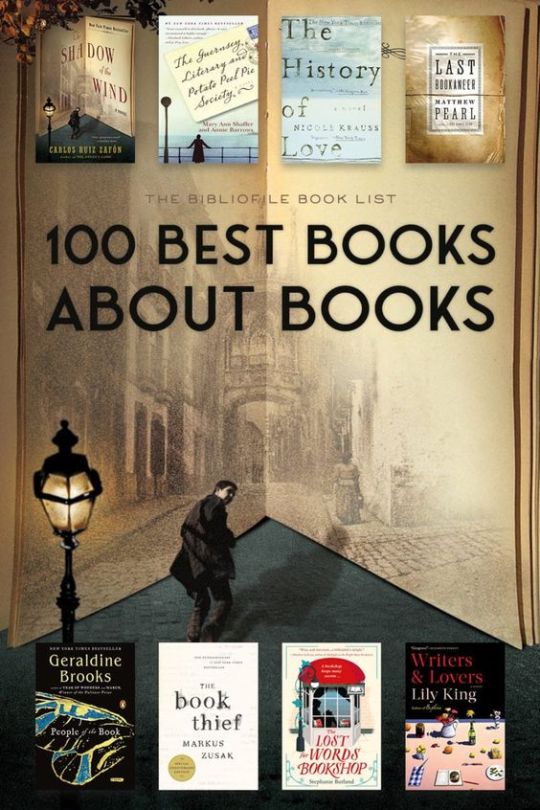
The list is all about books and reading. Some are about or set in bookstores, others are perhaps about literary societies or book clubs, many are about libraries, and some are just about people who really love reading — you get the point. Overflowing in fun literary references and cozy nooks to read, it’s a great list to dive into if you’re looking for something to indulge the book lover in you.
If you have any additional suggestions, feel free to drop a comment below. Happy reading, book lovers!
The Shadow of the Wind CARLOS RUIZ ZAFON
Mr. Penumbra's 24-Hour Bookshop ROBIN SLOAN
The Book Thief MARKUS ZUSAK
Reading Lolita in Tehran AZAR NAFISI
The Guernsey Literary and Potato Peel Pie Society MARY ANN SHAFFER
Fahrenheit 451 RAY BRADBURY
The Thirteenth Tale DIANE SETTERFIELD
84, Charing Cross Road HELENE HANFF
The Eyre Affair (Thursday Next #1) JASPER FFORDE
Lost in a Good Book (Thursday Next #2) JASPER FFORDE
The Club Dumas ARTURO PEREZ-REVERTE
People of the Book GERALDINE BROOKS
If on a Winter's Night a Traveler ITALO CALVINO
The Book of Lost Things JOHN CONNOLLY
The History of Love NICOLE KRAUSS
Writers & Lovers LILY KING
The Bookman's Tale CHARLIE LOVETT
First Impressions: A Novel of Old Books, Unexpected Love, and Jane Austen CHARLIE LOVETT
The Forgotten Garden KATE MORTON
Eight Perfect Murders (Malcolm Kershaw #1) PETER SWANSON
The Book of Lost Names KRISTIN HARMEL
Erotic Stories for Punjabi Widows BALLI KAUR JASWAL
The Weight of Ink RACHEL KADISH
The Book of Speculation ERIKA SWYLER
The Bookshop of Yesterdays AMY MEYERSON
The Library of Lost and Found PHAEDRA PATRICK
The Library of the Unwritten (Hell's Library #1) A.J. HACKWITH
The Library Book SUSAN ORLEAN
The Invisible Library (The Invisible Library #1) GENEVIEVE COGMAN
Matilda ROALD DAHL
Ink and Bone (The Great Library #1) RACHEL CAINE
Inkheart (Inkworld, #1) CORNELIA FUNKE
The Book Charmer (Dove Pond #1) KAREN HAWKINS
Summer Hours at the Robbers Library SUE HALPERN
Camino Island (Camino Island #1) JOHN GRISHAM
The Book Woman of Troublesome Creek KIM MICHELE RICHARDSON
The Giver of Stars JOJO MOYES
The End of Your Life Book Club WILL SCHWALBE
The Bookish Life of Nina Hill ABBI WAXMAN
How to Find Love in a Bookshop VERONICA HENRY
Beach Read EMILY HENRY
The Dictionary of Lost Words BY PIP WILLIAMS
The Librarian of Auschwitz ANTONIO ITURBE
The Possessed: Adventures with Russian Books and the People Who Read Them ELIF BATUMAN
Midnight at the Bright Ideas Bookstore MATTHEW SULLIVAN
The Bookseller CYNTHIA SWANSON
A Discovery of Witches (All Souls Trilogy #1) DEBORAH E. HARKNESS
The Little Paris Bookshop NINA GEORGE
The Lost for Words Bookshop STEPHANIE BUTLAND
The Storied Life of A.J. Fikry GABRIELLE ZEVIN
The Lions of Fifth Avenue FIONA DAVIS
The Children's Book A.S. BYATT
Possession A. S. BYATT
The Reader BERNHARD SCHLINK
The Strange Library MURAKAMI HARUKI
The Historian ELIZABETH KOSTOVA
The Left-Handed Booksellers of London GARTH NIX
Lost For Words STEPHANIE BUTLAND
Murder by the Book LAUREN ELLIOTT
Booked To Die (Cliff Janeway #1) JOHN DUNNING
Trouble on the Books (Castle Bookshop Mystery #1) ESSIE LANG
By Book or By Crook (Lighthouse Library Mystery #1) EVA GATES
The Case of the Missing Books (Mobile Library Mystery #1) IAN SANSOM
The Uncommon Reader ALAN BENNETT
The Violets of March SARAH JIO
Book Lust: Recommended Reading for Every Mood, Moment, and Reason NANCY PEARL
The Man Who Loved Books Too Much: The True Story of a Thief, a Detective, and a World of Literary Obsession ALLISON HOOVER BARTLETT
The Lost and Found Bookshop SUSAN WIGGS
The Eighth Detective ALEX PAVESI
The Fifth Avenue Story Society RACHEL HAUCK
The Hazel Wood (The Hazel Wood #1) MELISSA ALBERT
The Stranger Diaries (Harbinder Kaur #1) ELLY GRIFFITHS
The Ghostwriter ALESSANDRA TORRE
The Editor STEVEN ROWLEY
Suggested Reading DAVE CONNIS
The Last Bookshop in London MADELINE MARTIN
The Bookshop on the Corner (Scottish Bookshop #1) JENNY COLGAN
The Bookshop on the Shore (Scottish Bookshop #2) JENNY COLGAN
The Haunted Bookshop (Parnassus Series #2) CHRISTOPHER MORLEY
The Camel Bookmobile MASHA HAMILTON
The Bookshop Book JEN CAMPBELL
The Last Bookaneer MATTHEW PEARL
The Jane Austen Book Club KAREN JOY FOWLER
The Readers of Broken Wheel Recommend KATARINA BIVALD
The Bar Harbor Retirement Home for Famous Writers TERRI-LYNNE DEFINO
The Diary of a Bookseller SHAUN BYTHELL
The Jane Austen Society NATALIE JENNER
The Princess Bride WILLIAM GOLDMAN
The Library at the Edge of the World FELICITY HAYES-MCCOY
The Starless Sea ERIN MORGENSTERN
The Bookshop PENELOPE FITZGERALD
Confessions of a Bookseller SHAUN BYTHELL
The Night Bookmobile NIFFENEGGER
The Southern Book Club's Guide to Slaying Vampires GRADY HENDRIX
The Lending Library ALIZA FOGELSON
The Borrower REBECCA MAKKAI
Lost in a Good Book JASPER FFORDE
The Name of the Rose UMBERTO ECO
The Library of Babel JORGE LUIS BORGES
Bookworm: A Memoir of Childhood Reading LUCY MANGAN
Anna Karenina Fix: Life Lessons from Russian Literature VIV GROSKOP
Howard's End E. M. FORSTER
Don Quixote MIGUEL De CERVANTES SAAVEDRA
The Last Book Party KAREN DUKESS
Daily inspiration. Discover more photos at http://justforbooks.tumblr.com
65 notes
·
View notes
Photo
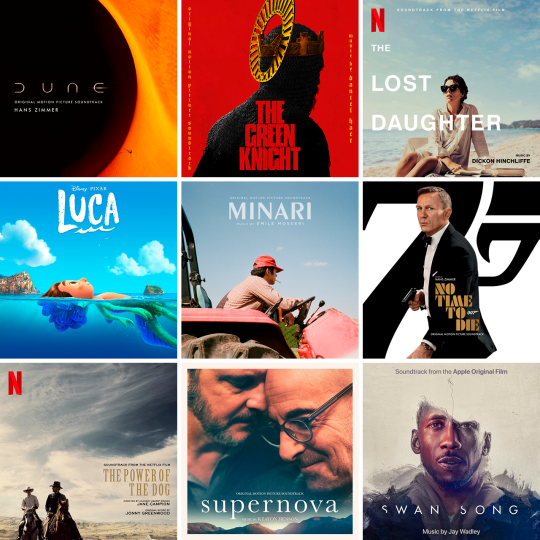

P⬤21 Score Dune Hans Zimmer The Green Knight Daniel Hart The Lost Daughter Dickon Hinchliffe Luca Dan Romer Minari Emile Mosseri No Time to Die Hans Zimmer The Power of the Dog Jonny Greenwood Supernova Keaton Henson Swan Song Jay Wadley Soundtrack The Harder They Fall Judas and the Black Messiah Luca Nomadland Shang-Chi and the Legend of the Ten Rings Swan Song Canción “Akh Lar Gayee (ft. Surinderjit Singh)” — Prem-Hardeep Prem-Hardeep, Surinderjit Singh The White Tiger “Dos Oruguitas” — Sebastián Yatra Lin-Manuel Miranda Encanto “Fight For You” — H.E.R. Gabriella Wilson, Tiara Thomas, Dernst Emile II Judas and the Black Messiah “The Harder They Fall” — Koffee Shawn Carter, Jeymes Samuel, Mikayla Simpson The Harder They Fall “Lead the Way” — Jhené Aiko Jhené Aiko, James Newton Howard Raya and the Last Dragon “No Time to Die” — Billie Eilish Billie Eilish, Finneas O’Connell No Time To Die “Rain Song” — Han Ye-ri Stephanie Hong, Emile Mosseri Minari “Run It (ft. Rick Ross & Rich Brian)” — DJ Snake William Sami Étienne Grigahcine, Brian Imanuel, Christian Dold, Rick Ross, SIM Shang-Chi and the Legend of the Ten Rings “Speak Now” — Leslie Odom Jr. Leslie Odom Jr., Sam Ashworth One Night in Miami... Mezcla de Sonido Dune Ron Bartlett, Doug Hemphill, Alan Meyerson, Thomas J. O'Connell , Mac Ruth, Don White Encanto David Boucher, Scott Curtis, David E. Fluhr, Gabriel Guy, Doc Kane, Paul McGrath, Alvin Wee In the Heights Vinny Alfano, Ryan Collison, Lewis Goldstein, Eric Gotthelf, Drew Kunin, John Marquis, Connor Nagy, Aaron Southerland, Jerrell Suelto, Tami Treadwell No Time to Die Mark Appleby, Al Clay, Simon Hayes, Stephen Lipson, Paul Massey, Adam Mendez, Mark Taylor Shang-Chi and the Legend of the Ten Rings Sona Balam, Onnalee Blank, Jason Butler, Peter J. Devlin, Richard Duarte, Lora Hirschberg, Doc Kane, Yung Q, Fred Runner West Side Story Doc Kane, Tod A. Maitland, Shawn Murphy, Andy Nelson, Frank Rinella, Gary Rydstrom Edición de Sonido Dune David Bach, Clint Bennett, Theo Green, Mark A. Mangini, Ryan Rubin, Dave Whitehead The Green Knight Christopher Barnett, Richard Gould, Chris Manning, Johnny Marshall, Greg J. Peterson, Mark Jan Wlodarkiewicz Luca Barney Jones, Justin Doyle, André Fenley, Pascal Garneau, Samuel Lehmer, Justin Pearson, Larry Oatfield, Christopher Scarabosio, Lodge Worster No Time to Die Hugo Adams, Christopher Benstead, Bryan Bowen, Michael Fentum, Dawn Gough, James Harrison, Eilam Hoffman, Michael Maroussas, Becki Ponting, Oliver Tarney A Quiet Place Part II Erik Aadahl, Nancy Allen, Ramiro Belgardt, Malte Bieler, Chris Diebold, Brandon Jones, Vanessa Lapato, Nancy Nugent, Jim Schultz, Del Spiva, Ethan Van der Ryn Raya and the Last Dragon Chris Frazier, David C. Hughes, Shannon Mills, Samson Neslund, Steve Orlando, Brad Semenoff, Jim Weidman
#Film#No Time to Die#Dune#Luca#Shang-Chi and the Legend of the Ten Rings#The Green Knight#Swan Song#Judas and the Black Messiah#Encanto#Raya and the Last Dragon#Minari#The Harder They Fall#Awards#Score#Soundtrack#Song#Sound#O21#MG#⬤
14 notes
·
View notes
Photo






Laverne & Shirley
S1E12: Hi, Neighbor
Directed by Alan Meyerson Written by Michael McKean and David Lander and Harry Shearer
“That’s me, Laverne. The lone wolf.”
#laverne & shirley#laverne and shirley#hi neighbor#gif#gif warning#lenny kosnowski#andrew squiggman#the smooch
25 notes
·
View notes
Audio
(Living in the USA)
1 note
·
View note
Text
The Lion King (Original Motion Picture Soundtrack) Credits and Streams
The Lion King (Original Motion Picture Soundtrack) Credits and Streams
The Lion King hits theatres on July 18, 2019, and the iconic Disney movie has delivered an updated soundtrack. Director Jon Favreau wanted the music to expand on what people love about the classic. Elton John was brought in to rework his previous contributions along with Hans Zimmer and Lebo M., the South African Composer/Producer who arranged and performed music for the previous film and stage…
View On WordPress
#Abner A. Mariri#Alan Meyerson#Aldo Arechar#Alfie Silas#Alfredo Pasquel#Andre Washington#Andrea Roberts#Baby Cele#Batho Mhlongo#beyonce#Bheki Ndlovu#Billy Eichner#Billy Eichner & Seth Rogen#Bob Joyce#Bobbi page#Bongani Ngcobo#Carmen Twillie#Chapman#Chiwetel Ejiofor#Chuck Choi#Clydene Jackson#Colin Leonard#Columbia Records#Cory Bice#Daniel Pampuri#David Fleming#Derek Dixie#Derrick Charles#Donald Glover#Donald Paige
0 notes
Photo

Immerse Virtual Studio | Alan Meyerson, Immerse Virtual Studio | Alan Electronic Music Culture https://www.pluginboutique.com/product/3-Studio-Tools/95-Referencing-Tools/9092-Immerse-Virtual-Studio-Alan-Meyerson?utm_campaign=925593_(L)%20PB%20-%20Friday%20NL%20-%2010/06/2022&utm_medium=email&utm_source=Newsletter&dm_i=6D39,JU6X,ZZXXZ,2FG7Q,1
0 notes
Text

Miss this? Not a problem 👉🏼it's ON DEMAND: Harold Meyerson & PDA's Executive Director Alan Minsky on The Jeff Santos Show https://soundcloud.com/ron-crider/4422-hr-3-harold-meyerson-alan-minsky
1 note
·
View note
Photo
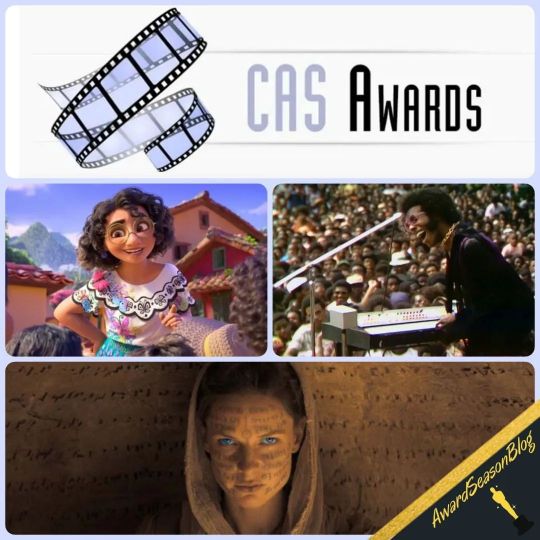
Annunciati i vincitori dei Cinema Audio Society Awards (#CAS) i premi con cui il sindacato dei professionisti del suono elegge ogni anno i migliori “registi del sonoro”. I loro verdetti sono sempre stati molto attesi per le previsioni ai successivi Oscar perché consentivano di prevedere i favoriti nella categoria del Miglior mixaggio sonoro (Academy Award for sound mixing). Ora per il secondo anno consecutivo questa categoria è stata inglobata in quella del Best Sound. Con statistiche alla mano basti pensare che nelle ultime 28 edizioni il vincitore dei Cinema Audio Society Awards ha vinto poi l’ambita statuetta ben 15 volte: Apollo 13, Il Paziente Inglese, Titanic, Salvate il soldato Ryan, Matrix, Il Gladiatore, Dreamgirls, The Millionaire, The Hurt Locker, Hugo Cabret, I miserabili, Gravity, Dunkirk, Bohemian Rhapsody, Sound of Metal. Ecco i vincitori di quest'anno delle 3 categorie cinematografiche: MOTION PICTURES – LIVE ACTION WINNER: #Dune Production Mixer: Mac Ruth CAS Re-Recording Mixer: Ron Bartlett CAS Re-Recording Mixer: Douglas Hemphill CAS Scoring Mixer: Alan Meyerson CAS ADR Mixer: Tommy O’Connell Foley Mixer: Don White MOTION PICTURES — ANIMATED WINNER: #Encanto Original Dialogue Mixer: Paul McGrath CAS Re-Recording Mixer: David E. Fluhr CAS Re-Recording Mixer: Gabriel Guy CAS Song Mixer: David Boucher CAS Scoring Mixer: Alvin Wee ADR Mixer: Doc Kane CAS Foley Mixer: Scott Curtis MOTION PICTURES — DOCUMENTARY WINNER: #SummerofSoul (…Or, When the Revolution Could Not Be Televised) Production Mixer: Emily Strong Re-Recording Mixer: Paul Hsu Re-Recording Mixer: Roberto Fernandez CAS Re-Recording Mixer: Paul Massey CAS Music Mixer: Jimmy Douglass #CASawards2022 #AwardsSeason #Winners #TechnicalGuildAwards #CinemaAudioSocietyAward #BestSound #Migliorsonoro #Awards #Movies #StagionedeiPremi #AwardsRace #OscarsRace #RoadtotheOscars https://www.instagram.com/p/CbUFbWyocq-/?utm_medium=tumblr
#cas#dune#encanto#summerofsoul#casawards2022#awardsseason#winners#technicalguildawards#cinemaaudiosocietyaward#bestsound#migliorsonoro#awards#movies#stagionedeipremi#awardsrace#oscarsrace#roadtotheoscars
0 notes
Text
Today’s Movie: A Woman Called Golda
Year of Release: 1982
Stars: Ingrid Bergman, Ned Beatty, Franklin Cover
Director: Alan Gibson
This movie is not on my list of essential films.
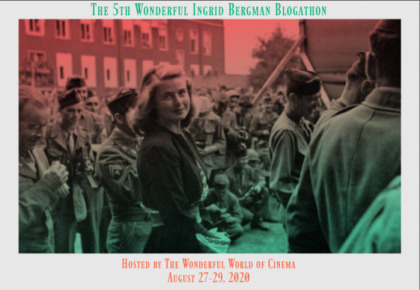
NOTE: This installment of Sports Analogies Hidden In Classic Movies is being done as part of something called The 5th Wonderful Ingrid Bergman Blog-A-Thon being hosted by The Wonderful World of Cinema. She hosted the first blog-a-thon in which I ever participated; you might say she helped create the monster you see now some 90 episodes later. At one time, I wondered why she kept having me in these events; after all, she has to be smarter than that considering she just earned an advanced degree in “filmy stuff.” Then I realized her genius…she has me around as my thick-headed slop makes the other participants look that much better 🙂
You can see all the contributors to this blog-a-thon here:
Days One, Two, and Three
The Story:
youtube
Have you ever heard the old saying “save the best for last?” No doubt, there are some hardcore Bergman-o-philes who might recoil in horror at what I’m about to suggest, but for my money, Ingrid Bergman’s final performance may very well be one of her best.
For purposes of full disclosure, I’m not the world’s foremost Ingrid Bergman fan. I don’t get far off the “beaten path” when it comes to her work; I couldn’t take a discussion much beyond “Casablanca,” “Gaslight,” or “Notorious.” I could barely tell you if Rossellini is a pasta dish or a director, but I can tell you this. Anybody who does consider themselves a fan of Bergman needs to have this movie in their “watched” folder.
The Necessary Backstory
If it weren’t for “Movie for a Rained-Out Ball Game,” I wouldn’t have discovered this gem either. Now, you can’t be a “movie snob” and still appreciate “A Woman Called Golda.” Going in, you have to understand this is a “made for television” effort; it has the inherent flaws of such a movie.
First, it’s pretty clear this movie lacked the luxury of a large budget. Second, having such low overhead is why local television stations had this film in the bank ready for the “rainy day.” Lastly, there’s the issue of casting. Most such films have three core characteristics:
1) A Collection of “That Guy” Actors
This is a tactic shared by disaster movies as I explored in the low-budget Martin Milner 1976 TV epic “Flood!” The difference is the price tags on the cast of familiar faces. “A Woman Called Golda” is no exception. The first-time viewer of a sufficient age is certainly going to recognize some faces of the time. If you were a fan of “The Jeffersons,” you might recognize Franklin “Mr. Willis” Cover playing Senator Hubert Humphery. Fans of the “Star Wars” franchise might recognize this movie’s “Mr. Macy” as General Rieekan from “The Empire Strikes Back;” the guy who looks like he’s wearing throat lozenges on his uniform. Then’s there’s the ever-present Ned “Squeal Like a Pig” Beatty.
This slideshow requires JavaScript.
That’s just for openers. If for no other reason, you need to watch this movie to spot all the familiar faces. This cast features one Oscar winner and four Oscar nominees in a melange of the recognizable. You can even make a drinking game out of spotting them all.
2) A Television Legend

Arguably the biggest legend to date is television history in William Shatner. But if his first series didn’t become so iconic, Shatner is likely little more than a footnote in the grand scheme of the small screen; he’s forever the guy who sees gremlins on the wing in “The Twilight Zone.”
Let’s be honest, “Star Trek” doesn’t become a staple of television history with out Leonard Nimoy; Shatner lived long and prospered because of “Spock.” In the very same vein as the green-blooded Spock did for Captain Kirk, Nimoy’s presence in this film as Golda Meir’s husband lays the foundation for the capital piece of casting for any film of this ilk…
3) Honest to Goodness Hollywood Royalty (albeit an aging one)
Character actor extraordinaire Robert Loggia’s portrayal of Egyptian President Anwar Sadat offered the opportunity to portray one of the great dynamic characters of all time. Sadat was one of the military officers who staged a coup d’état against King Farouk in 1952. He became prominent in Egyptian politics serving as Vice President and Minister of State under President Gamal Abdel Nasser. Sadat succeeded Nasser as President of Egypt in 1970, the year after Golda Meir became the Prime Minister of Israel.
The problem is Loggia was normally known for playing “Mob” type uber-hoodlums and he simply just wasn’t up to the task of playing a statesman like Sadat.
Frankly, there are times when Loggia’s performance borders on the clownish, but putting him in that role was either the definition of “accidentally successful” or pure, unadulterated genius. If an actor capable of exploring the depth of a character like Anwar Sadat had been cast in that role, it very easily could have forced a pivot in perspective of the whole film. If they had been able to put Anthony Quinn in that role, they might as well have re-worked the whole picture to “A Man Called Anwar” rather than “A Woman Called Golda.”
In terms of world history, the tales of Anwar Sadat and Golda Meir are inextricably linked, which makes telling the tale of one without making a co-star of the other intrinsically difficult. Besides, as previously mentioned, Paramount Domestic Television only had budget for one Hollywood monarch, and that was Ingrid Bergman.
Even if they hadn’t re-worked the picture, the Sadat character could have easily stolen the movie. When Sadat comes to power in 1970, he is the leader of a nation orders of magnitude larger and more powerful than Israel. Not only is that nation thirsty for revenge for the loss of the Sinai Peninsula during the 1967 “Six-Day War,” but the Soviet Union is Egypt’s main source of foreign aid and also wouldn’t mind seeing the Jewish state wiped off the map. Sadat know that being hostile to both the United States and Israel was a hindrance to industrialization and modernization of Egypt, but changing those things was not going to be an “overnight” project.
But by 1973, the Arab states, particularly Syria, Jordan, and the Egyptian Army – those who had lost territory to Israel in 1967 – were ready to unleash the dogs of war yet again in a bid to recapture the Sinai, the Gaza Strip, the Golan Heights, the West Bank and the other lands lost in the previously. This leads us to the defining moment of Golda Meir’s life.
The Brilliance of Ingrid Bergman
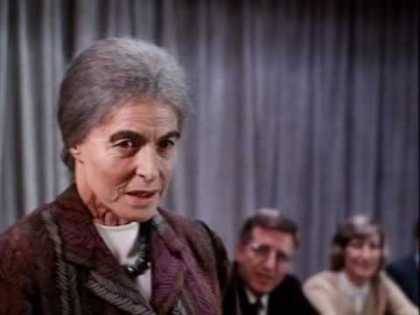
Golda Meir with Anwar Sadat during his visit to Israel in 1977.
“A Woman Called Golda” was a four-hour “made for television” movie originally aired in two-hour halves in 1982. As the aforementioned “Hollywood Royalty,” Bergman’s main role was to lend gravitas to the film. The film opens in 1977; the scene being Golda Meir has returned to her old school in Milwaukee, Wisconsin. She is telling the students the story of her life. Through a series of flashbacks woven together with Bergman’s narrative, the audience is drawn into the story-telling. In one fell swoop, all the problems are solved. The way this movie was made eliminated issues created by the the quirky casting, the also aforementioned “Sadat” problem, and opens the door for Bergman to deliver a tremendous performance for a story which richly deserved it.
Meir was born on May 3, 1898 as Golda Mabovitch in Kiev, Russian Empire (present-day Ukraine). Her father went to find work in America in 1903, and once he had saved enough money, the rest of the family emigrated to Milwaukee in 1906 to escape the ever-present persecution of Jews throughout Europe. Those struggles fed Golda’s dream of an independent Jewish state. In the meantime, she attended college, became a teacher, met and married Morris Meyerson (played by Leonard Nimoy) in 1917.
Morris and Golda moved to the British Mandate of Palestine (land that would eventually become Israel) in 1921 to live and work on a kibbutz. While Golda was not performing her duties of picking almonds, planting trees, tending chickens, and running the kitchen, her leadership abilities were noticed. As a result, the other members of the kibbutz chose her as its representative to the General Federation of Labor known as the Histadrut.
Despite the fact they left the kibbutz in 1924, Golda’s rise in the political world would continue. The couple eventually settled in Jerusalem where they have two children; a son Menachem and a daughter Sarah.
The next step in Golda’s ascension took place in 1928 when she was elected secretary of the Working Women’s Council (Moetzet HaPoalot). This position required her to spend two years as an emissary in the United States. While this was a major step for her, it also marked the beginning of the end of her marriage to Morris. The children went with Golda to America, but Morris remained in Jerusalem. Over the next two decades Morris and Golda grew apart, but never divorced; despite their estrangement, they remained married until his death in 1951. The next two decades saw Golda serve in a variety of roles in service of Israel.
Meir with President Kennedy when she was Israel’s Foreign Minister. 1962
By 1969, Meir was in a state of semi-retirement due to health concerns, but after prime minister Levi Eshkol’s sudden death, Meir was elected as his successor. She took office in March of 1969 and maintained the coalition government between her own Mapai party and two others, the Rafi and Ahdut Ha’Avoda. Eventually, these three would officially merge to form the Israeli Labor Party.
But early in her term as prime minister, Meir eschewed politics to court other world leaders regardless of their ideology with her own vision of peace in the middle east. This included the President of the United States Richard Nixon, Romanian communist dictator Nicolae Ceausesçu, and and Pope Paul VI. In a highly controversial move, Meir even hosted a visit to Israel by West German chancellor Willy Brandt in 1973.

Through Bergman’s portrayal and narration, viewers start to see Meir’s overall strategy of making Israel a sympathetic figure by being the side seeking peace. This is only exacerbated in the wake of the Palestinian terror attack on the 1972 Munich Olympics in which 11 Israeli athletes were murdered. This strategy becomes pivotal in Meir’s finest moment.
Early in 1973, Meir cemented her relationship with American President Richard Nixon and Secretary of State Henry Kissinger when she agreed to Kissinger’s peace proposal based on “security versus sovereignty” in which Israel would accept Egyptian sovereignty over all of the Sinai Peninsula, while Egypt would accept Israeli presence in some of the Sinai’s strategic positions. However, this back-fired; in October of 1973 the Arab states began massing troops on the Israeli borders.
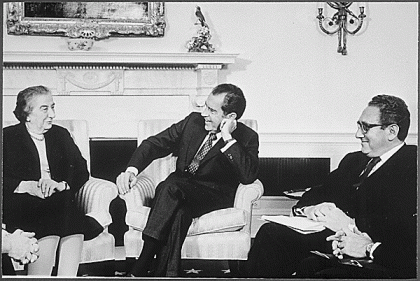
Prime Minister Meir, President Nixon, and Secretary of State Kissinger in 1973.
This is the moment when Bergman’s portrayal fulfills the “gravitas” role – and then some – because this is the moment where Meir is faced with a decision with the fate of a nation hanging in the balance.
On the eve of the October 1973 “Yom Kippur” war, Israeli intelligence could not conclusively determine that an attack was imminent, but the signs of a heavy troop build-up in the Golan Heights and in the Sinai were clear. Meir was convinced this was a set-up identical to the Six-Day War six years earlier. On one hand, there were advisors telling her an attack was not likely. The Israeli public shared that sentiment, especially given the crushing defeat which was inflicted on the Arab states in 1967. Despite the fact she had complete authority to order a full-scale mobilization for war, Meir did not do so.
But a few days later, it became clear an attack was imminent, and Meir’s delay only allowed the enemy forces to grow in strength. Mere hours before the outbreak of war, Meir met with Minister of Defense Moshe Dayan and Army Chief of Staff General David Elazar. While Dayan continued to argue that war was not likely and felt that only the Israeli Air Force and two Army division needed to be called up, while Elazar felt a full-scale mobilization was necessary along with launch of a devastating preemptive strike on the Syrian and Egyptian forces.
Meir agreed to the complete mobilization of the Israeli Defense Force (IDF), but would not order the preemptive attack. Meir told Dayan and Elezar that Israel’s survival would depend on foreign aid. To that end, she believed they were not able to depend on European nations to supply Israel with military equipment, and the only country which would possibly come to Israel’s defense was the United States, but that wouldn’t happen if the Americans felt Israel initiated the hostilities. Meir placed her bet; million of lives including her own and the survival of a notion were at stake.
At 2 p.m. on October 6th, the armies of Syria and Egypt poured into Israel. The IDF launched a series of blocking actions against the Syrians and launched a mostly ineffective counter-offensive against the Egyptians in the Sinai. By October 11th, the invading forces had been pushed back by the IDF, but the Israeli Air Force and Army had suffered massive casualties and had no reserves. If the Arabs counter-attacked at this point, the Israelis could have easily suffered a defeat ensuring the destruction of the entire nation and a blood-bath of unimaginable scale.
But Meir’s gamble paid off. On October 12th, President of the United States Richard Nixon ordered the launch of Operation Nickel Grass, and within 24 hours American military hardware began flooding into Israel. Within days, the re-armed and re-supplied IDF was back on the offensive with forces across the Suez Canal threatening Cairo and breaking out of the Golan Heights on the road to Damascus.
One of the reasons why Meir made the right call on the preemptive strike is she hedged that bet by letting Nixon and Kissinger know her decision and why she made it. After Operation Nickel Grass was launched, Kissinger told Meir that she made the right choice; that if she had ordered the firing of the first shot, he and Nixon “wouldn’t have given Israel so much as a nail.”
Ironically, it was Meir’s triumph in the Yom Kippur war which led to her political downfall. In the aftermath, the Israeli public demanded answers for why the IDF seemed so -ill-prepared for the initial attack which led to it taking such heavy casualties. Both Meir and Chief of Staff Elazar became scapegoats and were forced to resign.
The Legacy of Golda Meir

Israeli 10 Sheqalim Banknote commemorating Golda Meir
The film ends by coming full circle with Ingrid Bergman bringing the tale of Golda Meir’s life story to a close with the audience of school children. Meir died shortly after this trip to her school; she had been suffering from lymphoma for years. Bergman passed away on her 67th birthday only a few months from the end of filming “A Woman Called Golda.” Like Meir, Bergman was also suffering from cancer.
But despite the ignominious end to her political career, Golda Meir is still a revered figure in Israel. Not only is she on a bank note, she is buried on Mount Herzl, the site of Israel’s national cemetery. The first and only woman to hold the office of Prime Minister in Israeli history to date, and only the fourth woman to be a head of state in the world at the time, Golda Meir was known as the “Iron Lady” of Israeli politics; this term would later be used to describe Indian Prime Minister Indira Gandhi and British Prime Minister Margaret Thatcher. Former Israeli Prime Minister David Ben-Gurion called Meir “the best man in the government” and “strong-willed, straight-talking, gray-bunned grandmother of the Jewish people.”
Similar glowing words for Ingrid Bergman came from her daughter Isabella Rossellini after she had seen “A Woman Called Golda.”
She never showed herself like that in life. In life, Mum showed courage. She was always a little vulnerable, courageous, but vulnerable. Mother had a sort of presence, like Golda, I was surprised to see it…When I saw her performance, I saw a mother that I’d never seen before – this woman with balls.
Like I said, if you consider yourself a fan of Ingrid Bergman, and you’ve never seen this film, you need to change that. Even if you already agree with the words of her daughter, once you see “A Woman Called Golda,” you’ll have a whole new appreciation for them.
Look what it did for me…the guy who still thinks Rossellini is something that comes with a red sauce.
The Hidden Sports Analogy:
Give or take a few years, Golda Meir was born right around the same time as Joan Whitney Payson. They both died within a few years of each other as well. But other than today’s hidden sports analogy, the similarities stop there.
Meir came to America as a penniless immigrant escaping the pogroms of Russia of the turn of the 20th century. Her father was a carpenter who sweated for every cent he ever had. Payson was the essential “trust find baby;” She inherited a trust fund from her grandfather William C. Whitney of the prominent Whitney family and on her father’s death in 1927, she received a large part of the family’s fortune…which goes all the way back to the colonial days. She was “old money” of the first order, was pedigreed at Barnard College, and was known as a businesswoman, philanthropist, patron of the arts and renowned art collector.

Joan Whitney Payson
But Payson was also a dedicated sports enthusiast who also happened to be a minority shareholder in the old New York Giants baseball club. Albeit on a different scale, post World War II Palestine shares a crucial characteristic with Major League Baseball of the same time; for both this was a time of complete upheaval. The effect of establishing a Jewish state in land held by Muslims since the Crusades speaks for itself. But the 1950s represented an equally tectonic shift in the demographics of the United States…and consequently those of it’s biggest sport at that time.
The Baseball Diaspora
The 1950s ushered in an era for franchise relocation and expansion for Major League Baseball. By 1957, the lure of new and untapped markets was so strong it reached the de facto capital of baseball, New York City. The “Big Apple” was home three teams; two of them being the biggest franchises in the game. To this day, no team has won more games than the Giants, and no team has won more championships than the New York Yankees. Conversely, the Brooklyn Dodgers were the “red-headed step-child” of New York baseball. The Dodgers owner Walter O’Malley wanted to buy land on which to build a stadium to replace the dilapidated Ebbets Field. For a host of reasons, this proved difficult.
Meanwhile, emissaries from the city of Los Angeles were looking to entice a team to move to California. After the war, the advent of transcontinental airline travel meant the obstacles of slow rail travel and the distance to the west coast were no longer in play. Nobody really thought a team would leave New York; as such the Angelino’s target to move west was the Washington Senators. It was no secret that Senators’ owner Calvin Griffith was open to be courted for a move. But when stories began to appear of O’Malley’s dissatisfaction with New York, the faction from Los Angeles shifted their focus.
In no time, O’Malley and the city of Los Angeles had a deal in place, but there was one snag. Citing travel and scheduling concerns, National League president Warren Giles would not allow O’Malley to move the Dodgers to the West Coast unless he could find another owner also willing to move. O’Malley began to put out feelers, but It was starting to look like Giles’ mandate was going to kill the deal. There were only eight teams in the National League at the time; the process of elimination left O’Malley with what he thought were no “real” options.
August Busch just had the city of St. Louis handed to his Cardinals as their exclusive market when the American League’s St. Louis Browns left to become the Baltimore Orioles in 1954, so there was no way he was moving. One of the biggest proponents of westward expansion was the Chicago Cubs’ owner William Wrigley; the Cubs were the first team to move their Spring Training facilities out of Florida, and he already owned the Los Angeles Angels of the Pacific Coast League. But for a host of reason, the idea of the Cubs abandoning Chicago was almost heretical as a team leaving New York. The one team which might have moved west with him was the Boston Braves, but they already made their move when they headed to Milwaukee in 1953.
Just when O’Malley was about to give up on the Los Angeles deal and the Brooklyn fans were beginning to rest assured they weren’t going to lose “dem Bums,” the bombshell hit that both the Brooklyn Dodgers and the New York Giants were leaving the “Big Apple” for Los Angeles and San Francisco respectively.

Horace Stoneham and Walter O’Malley right before they head for the airport.
What nobody knew that O’Malley discovered was the Giants’ majority owner Horace Stoneham was having similar difficulty finding a replacement for his team’s antiquated home stadium, the Polo Grounds. While all this was going one, the city of Minneapolis was already constructing Metropolitan Stadium in an attempt to lure a baseball team and/or a football team to the upper mid-west. The Minneapolis Millers were the New York Giants top minor-league affiliate at the time and Shoreham was noted to have said “there were not two better major league stadiums.”
That’s when O’Malley put “two and two together” deducing Shoreham was at least entertaining the idea of moving the Giants to the Twin Cities. Being open to leaving New York was the only opening O’Malley needed; he persuaded Shoreham to move the Giants San Francisco, fulfilling Warren Giles’ dictate the Dodgers would have a National League rival closer than St. Louis.
Redrawing Baseball’s Borders
As a minority owner of the the New York Giants, Joan Whitney Payson was staunchly opposed to the move. She knew what this would do to the fans. Baseball fandom in New York in the 1950 enjoyed the same fervor as any religion. It was a major component of your personal identity; race, creed, national origin, and Dodgers, Giants, or Yankees. It was that simple and well-defined, and you couldn’t change any of them.
In one fell swoop, legions of New York National League fans were cast into the baseball desert. Their teams were gone, and there was nothing they could do about. While Dodger and Giants fans enjoy of the great rivalries in all of sports, they do have one unifying factor. They both have an eyeball-splitting hatred of the New York Yankees.
Imagine what would have happened if in 1973 Golda Meir had said something like “In order to escape the never-ending cycle of war, we’re going to move the State of Israel to Utah. It’s just like Palestine; it’s got a big, salty lake and plenty of desert. It’ll be great!” Granted, that comparison leans a smidge to the absurd side, but it makes the point. It also sets the table for something even more absurd which actually happened. Imagine that after Israel made the move to Utah, somebody told the Jews left in Palestine that they could always just convert to Islam.
That’s essentially what National League president Warren Giles told Dodger and Giant fans after their teams were ripped out from underneath them. Giles was a huge proponent of expansion or relocation; anything that would put his league into new markets. During his term as president from 1952 to 1969, the National League broke out of it’s borders not having any teams farther south or west of St. Louis. In much the same way the borders of Israel were redrawn by military conquest, the borders of baseball territory were being redrawn by Warren Giles and his quest to chase the ever-shifting American population demographics.
The first step was the two New York teams heading for California. But it was in the 1960s when the expansion of baseball really took off. At the dawn of the decade, Giles announced plans to add four teams to the National League, with two being added in 1962 and two more in 1969. The plan called for the 1962 expansion to target Texas and the South, while the 1969 additions would focus on the West and possibly even a foray into Canada.
When questioned as to why there was no thought towards establishing a new National League presence in the “Big Apple,” Giles’ notorious reply “Who says you have to have a team in New York?”
The Rise of a New Baseball State
Naturally, Giles’ comments didn’t sit well with New Yorkers. But what baseball fans didn’t know was Giles’ visions of expansion were the direct result of the founding of a third Major League. While the Continental League never played a game, the fact that it had investors ready to move big-time baseball into cities where it did not exist yet made both the National and American leagues take notice.
Founded in 1958 by prominent attorney William Shea, the Continental Baseball League (CBL) had prominent prospective franchise owners like Bob Howsam (who would help create the American Football League and become the founder of the Denver Broncos), Wheelock Whitney, Jr. (who was influential in bringing professional sports to Minneapolis and was an owner of the National Football League’s Minnesota Vikings) and Toronto’s Jack Kent Cooke (who at one time owned the NFL’s Washington Redskins, the NBA’s Los Angeles Lakers, and the Los Angeles Lakers of the NHL.). That was a formidable line-up, but the CBL acquired its gravitas when Joan Whitney Payson threw open the door of her Fort Knox-ian bank vault to fund the start-up league.
Once she knew she couldn’t stop the Giants from leaving New York, Payson immediately sold her interest and began efforts to get another team in the “Big Apple.” But once she heard Warren Giles’ comments about New York, she knew the National League president did not want to give her an expansion team. But once she heard of the Continental Baseball League, Payson knew one way or another she was going to bring baseball back to Brooklyn and Queens.
When Warren Giles found out that Payson had just been awarded the CBL’s New York franchise, he knew he could not have somebody with her wealth and dedication to New York as a rival in the nation’s largest market. As a result, Warren Giles and the National League awarded an expansion franchise in 1960 for New York City to Joan Whitney Payson. At this point, both her and Shea abandoned the CBL to focus on their new National League franchise. This effectively marked the end of the CBL, which formally disbanded later that year.
Many have speculated over the years that the CBL was simply a canard used by Shea and Payson to illicit an expansion franchise out of Warren Giles. True or not, the fact is they brought the National League back to New York. The rest is history.
The Legacy
The New York Mets took the field for the first time in 1962. They had a record of 40 wins and 120 losses, making them easily the worst team in all of Major League Baseball. The wins and losses didn’t matter; what was important was baseball was back for Brooklyn and Queens. In those boroughs, there was no baseball; the hated Yankees were for Manhattan and the Bronx. Building on that,Payson managed to merge the fan bases of the departed Dodgers and Giants in much the same manner Golda Meir unified three political parties in Israel. The Mets’ uniforms featured both Dodger blue and Giant orange, and for their first two seasons they played their home games in the Giants’ old home, the Polo Grounds.

William Shea and the stadium that would bear his name.
In 1964, the Mets moved into the newly-constructed William H. Shea Municipal Stadium, or “Shea” for short. Payson insisted the new venue bear Shea’s name in tribute for all he did to bring the Mets to New York. As for Payson, she retained majority ownership of the Mets and functioned as the team president from it’s inception until her death in 1975. But she was no “figurehead” in the corner office. Payson was “hands-on” for the day-to-day operations of the New York Mets every day of her life. She was a fixture in the team’s facilities and was well admired by the team’s personnel and players, and all around baseball as well.
Joan Whitney Payson was the first woman in a major North American sports league found a franchise from the ground up, to buy majority control of a team rather than inheriting it, and as such was the first to have her team capture championship when “Miracle” Mets won the World Series in 1969.

Joan Whitney Payson was there from Day One of the New York Mets, and she gambled hard with her own money to bring the dream of a new franchise in New York to reality. Golda Meir was there from Day One with Israel, and she literally bet her own life to save her dream of an independent Jewish state. As mentioned, Payson and Meir came from very different backgrounds; Payson had money, and Golda Meir ended up on money.
But they both created something which means a great deal to a great many people to this day.
The Moral of the Story:
Even the largest of historical figures can’t make history alone. but Joan Whitney Payson and Golda Meir got pretty damn close.
FUN FACT: There was a television mini-series made in America in 1983 about the life of Anwar Sadat. He was played by Louis Gossett, Jr. and it was banned Egypt.
BONUS FUN FACT: This is not the first time Ingrid Bergman’s portrayal of Golda Meir has been mentioned on Dubsism. She was actually one of our first Sports Doppelgangers.
Check out Dubsism’s Movies and Blog-A-Thons page for a full schedule of projects past, present, and future!
Got a question, comment, or just want to yell at us? Hit us up at [email protected], @Dubsism on Twitter, or on our Pinterest, Tumblr, Instagram, Snapchat or Facebook pages, and be sure to bookmark Dubsism.com so you don’t miss anything from the most interesting independent sports blog on the web.
Sports Analogies Hidden In Classic Movies – Volume 90: “A Woman Called Golda” Today's Movie: A Woman Called Golda Year of Release: 1982 Stars: Ingrid Bergman, Ned Beatty, Franklin Cover…
#Baseball#Classic Movies#Golda Meir#History#Movies#New York Mets#Sports Analogies Hidden In Classic Movies
0 notes